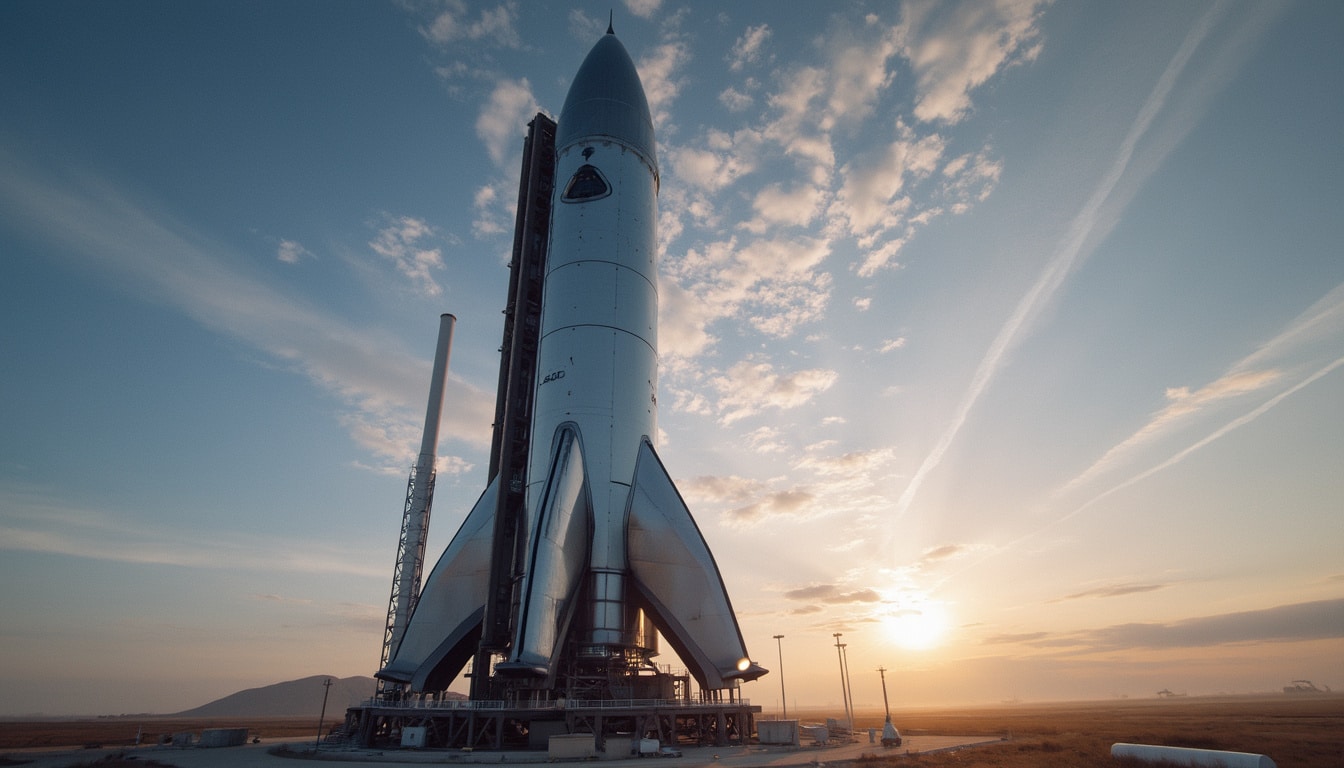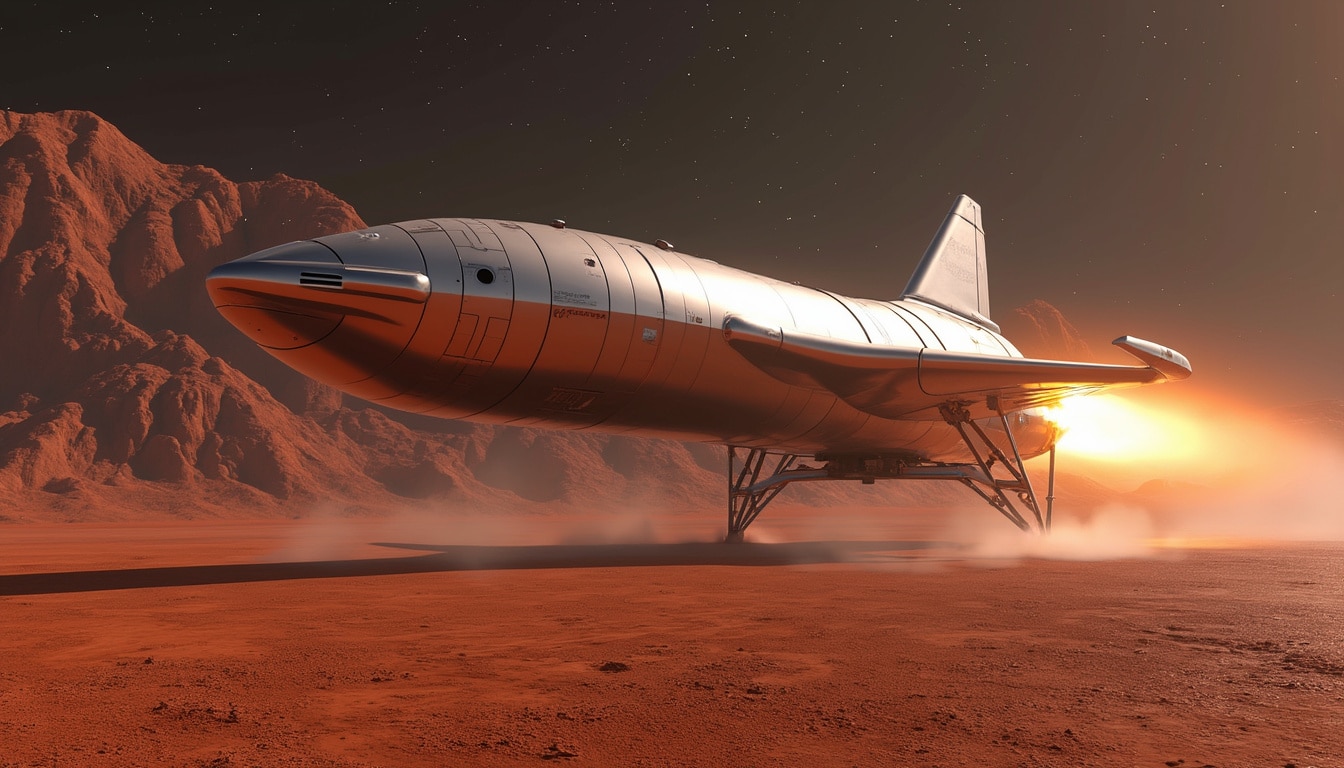SpaceX is accelerating its efforts to test the Starship Flight 9 from its Boca Chica launch site in Texas, following a temporary pause after the challenges encountered during Starship Flight 8. Recent updates indicate that SpaceX is preparing for a potential launch soon, with the upper-stage Starship already shipped to the test stand. During the latest tests, propellant was added to the tanks, suggesting readiness, yet static fire tests have not yet occurred, causing concern among enthusiasts and industry experts alike.
The journey of developing the Starship spacecraft has been dotted with trials and tribulations. SpaceX aims to perfect a system that promises rapid reusability, integral to future missions aimed at the Moon and Mars. Each test brings its lessons, and while setbacks are part of development, they foster innovation. The anticipation surrounding Flight 9 is palpable as it may showcase the first reuse of a Starship Super Heavy booster, a milestone that could redefine commercial space travel.
Revisiting Flight Testing: A Bumpy Path Forward
Testing operations for the spacecraft at the Boca Chica facility have been under scrutiny ever since the unfortunate failures that Shadowed the previous flights. The recent excursion into preparations for the next flight is a testament to SpaceX’s resilience and commitment to overcoming obstacles. The first attempts, especially Flight 7, laid bare several issues, including a catastrophic explosion mid-flight that raised eyebrows across the industry.

Evaluating Flight 8 and Its Impact
The disappointment following Flight 8, which concluded with another explosion before completing its ascent burn, has intensified calls for comprehensive changes to ensure that future attempts are successful. During the incident, it was revealed that an anomaly concerning vibrations in the propulsion system led to critical failures. This setback has prompted SpaceX to take a more deliberate approach towards testing, especially regarding the upper-stage vehicle.
In the aftermath of the Flight 8 incident, it became clear that effective communication is essential. SpaceX’s transparency about the problems they faced with Flight 7 was appreciated, yet less was shared about Flight 8’s malfunction. Stakeholders are eager to understand how the findings from these investigations can influence the design and testing protocols moving forward.
The Significance of Propellant Systems
A key element of the upcoming Starship Flight 9 testing involves a meticulous validation of the propellant systems. Recent activities showed that the team successfully filled propellant tanks, indicating operational readiness. However, unlike previous static fire tests, the tanks were later drained without a static fire occurring, underlining the cautious approach SpaceX is adopting. Ensuring that these systems can handle the rigors of spaceflight has become paramount.
As SpaceX prepares for the upcoming tests, engineers are focusing extensively on several aspects, including the flaps’ functionality and propellant management systems. Special attention is directed toward optimizing the rocket’s engines for sustained performance under pressure. The outcome of these static fires will present a crucial checkpoint in the Starship development process, paving the way for further interplanetary missions.
A Leap Towards Reusability
The concept of rocket reusability lies at the heart of SpaceX’s philosophy for the Starship program, with plans aimed at launching often and with as little downtime as possible. The anticipation surrounding the possibility of reusing a Super Heavy booster for Flight 9 represents a significant breakthrough that could alter the landscape of commercial space travel. This particular booster, which successfully launched during Flight 7, has become central to SpaceX’s efforts to create a sustainable and adaptable launch framework.
Strategic Importance of Reusability
At the core of the ambition to create a reliable and frequent launch cadence is the necessity of an operational framework that effectively meets the needs of various mission types. The ability to rapidly reflig aircraft will ensure long-duration missions, primarily those aimed at reaching the Moon and, ultimately, Mars. By establishing a successful network of reusable rockets, missions can be executed at an unprecedented level, which opens avenues for research, exploration, and potential commercial activities in space.
Competitors like Blue Origin, Virgin Galactic, Boeing, and Lockheed Martin have also made strides in developing reusable technology, which highlights the competitive nature of the field. However, SpaceX’s potential achievement with the upcoming Starship Flight 9 might set a new benchmark that could drive further innovations across the entire industry.
Charting the Course for Future Missions
Analysts and enthusiasts alike are looking forward to the role that Starship will play in NASA’s lunar lander program. The capability to refuel and sustain vehicles in orbital locations aligns with NASA’s vision of long-term human presence beyond Earth. SpaceX needs to demonstrate the necessary technologies for extracting and processing resources extraterrestrially, and these assessments will be crucial for upcoming missions.
| Flight Number | Status | Launch Date | Key Features |
|---|---|---|---|
| Flight 7 | Completed | January 2025 | Initial successful launch; booster reusability |
| Flight 8 | Failed | March 2025 | Explosion before ascent |
| Flight 9 | Upcoming | TBD | First reuse of booster; static fire testing scheduled |
The Role of Collaborations in Space Exploration
Space exploration is rarely a solitary endeavor; often, it brings together various industry leaders and governmental entities to achieve shared objectives. SpaceX’s partnerships with NASA and contracts awarded for tasks such as the Artemis lunar program showcase the importance of collaborative frameworks in advancing technologies and missions. The recent focus on lunar exploration by NASA seeks to expand knowledge about the Moon’s resources and the potential for human sustainability there.
Lessons from Other Space Companies
As SpaceX navigates its testing and development landscape, studying the accomplishments and missteps of other organizations can offer valuable insights. Companies like Rocket Lab and Sierra Nevada Corporation have pioneered innovative launch solutions that provide new perspectives on design and execution. Additionally, Northrop Grumman’s success with the Cygnus program highlights the importance of adaptive strategies to handle various mission profiles.
By remaining adaptable and open to learning from both successes and failures, SpaceX can further innovate and refine their challengers, empowering their journey to become a leader in commercial space ventures.
Anticipating Regulatory Environment Changes
The need to comply with various regulatory requirements has always been a consideration for any entity engaged in aerospace endeavors. Emerging discussions around potential regulatory adjustments could simplify the path for SpaceX and its competitors while also addressing safety concerns. Balancing industry growth with ethical and environmental considerations will be crucial for sustained stakeholder confidence.
The road ahead for SpaceX entails a multitude of factors, including engineering challenges, regulatory hurdles, and the continuous push for innovation and reusability within the aerospace sector. How these elements synchronize will significantly influence not just SpaceX’s path but the trajectory of the entire space exploration industry.
The Path to Mars: Not Just a Dream
With continued advancements in technology and invaluable data gathered from testing, the audacious goal of reaching Mars is inching closer to reality. Elon Musk’s vision places emphasis on colonizing Mars and establishing human settlements there, a mission that will require collaboration across various sectors. SpaceX’s ability to create solutions that integrate into larger frameworks will prove influential.

Preparing for Interplanetary Missions
The unforgiving environmental conditions presented by Mars will require innovations beyond current understanding. SpaceX is developing technologies to address challenges such as atmospheric processing systems to extract water and oxygen from Martian resources. Testing and refining these systems alongside traditional propulsion methods is essential for future missions that target long-duration stays on other planets.
Here’s where SpaceX aligns perfectly with NASA’s objectives in ensuring that astronauts can thrive beyond Earth while minimizing reliance on supplies dispatched from home. The learnings gained through the Starship program will forge pathways to make human life interplanetary a viable endeavor.
The Excitement of Backed Innovations
As SpaceX’s testing continues, the excitement surrounding advancements in its engine technology and flight capabilities can lead to groundbreaking developments. A dynamic landscape means ongoing updates will inspire not just technical experts but also the general public’s curiosity about space exploration. Collaboration with various stakeholders, including government bodies and commercial enterprises, will facilitate sustained growth and innovation in the sector while ensuring safety and reliability.
No matter how the upcoming tests unfold, they will surely send ripples through the industry, prompting adjustments and fueling new projects. Each flight represents not just a number in a series but a chance to manipulate the future of humanity in space.




Leave a Reply